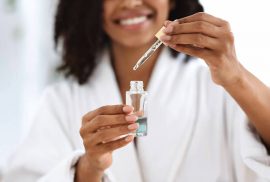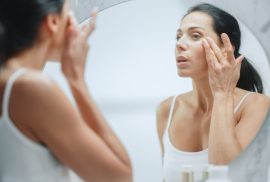10 Ways to Safely Exfoliate Your Body
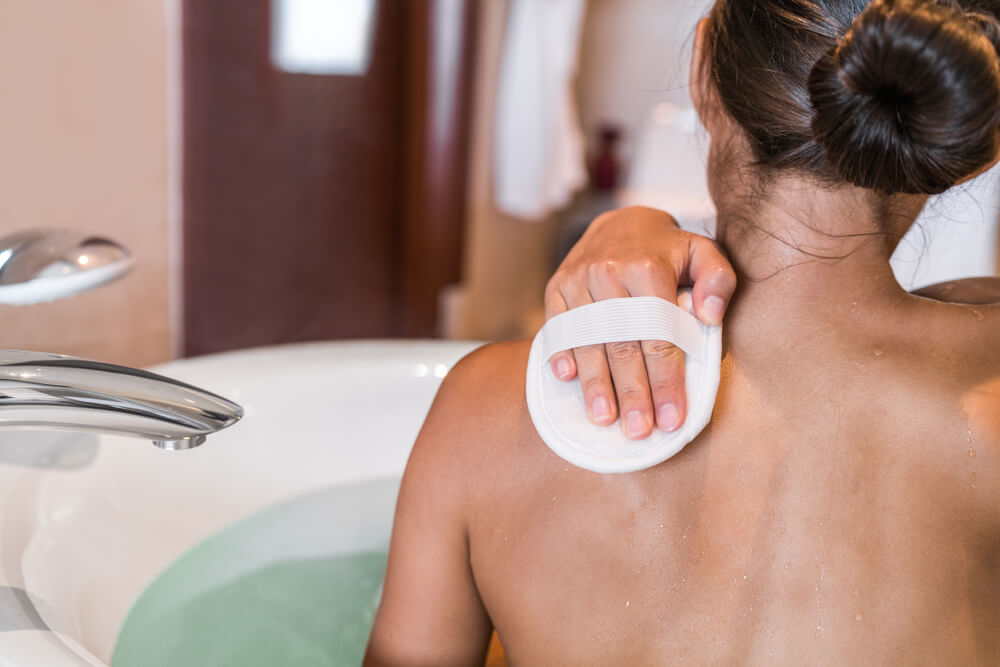
Although your skin naturally exfoliates itself, its ability to do so diminishes as you age. This begins in your 20s and exacerbates as you progress through the decades. This decline causes dead skin cells to build up on the skin, instead of being shed, resulting in skin that looks dull, rough, and lackluster.
This is where exfoliation can help to turn things around. Each time you exfoliate your skin, you’ll be removing the layer of dead skin cells that coats your skin’s surface, along with any excess sebum, dirt, and other impurities that may also be lingering there. Exfoliating that layer away will reveal skin that looks bright, smooth, and beautifully healthy, making this such an essential step in any skincare routine.
With that said, most of the exfoliation advice out there focuses on the face. This is simply down to how it’s harder to spot dullness and blemishes on the body, whereas when those issues affect your face, they tend to be glaringly obvious, making this the focus of people’s exfoliation efforts.
While that may be the case, exfoliating your body is just as important. Read on as Vivo Per Lei shares 10 ways to safely go about doing just that!
1. A Salt Scrub
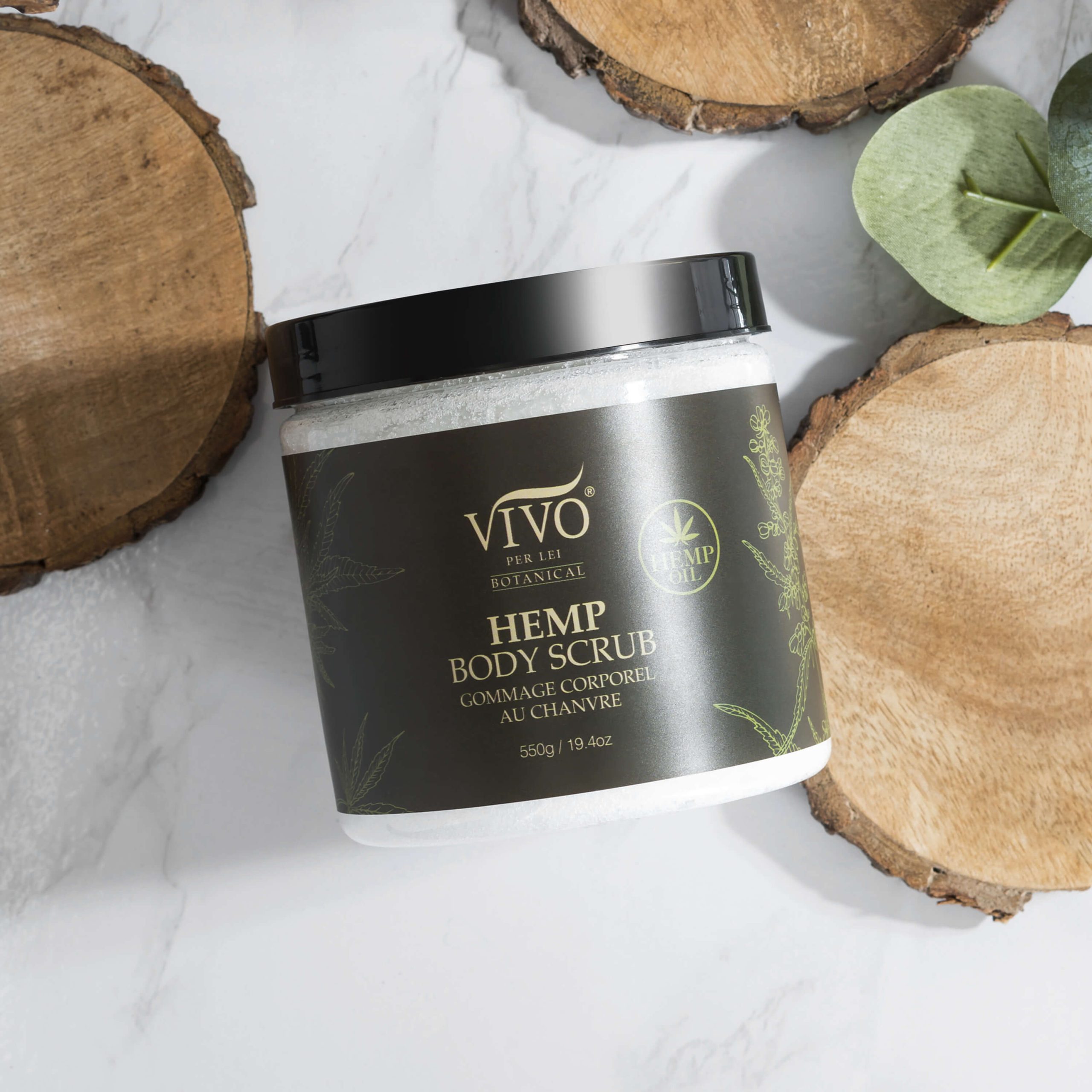
One of the most popular ways to exfoliate the body is with a body scrub. These can be made from various ingredients, but there will always be at least one abrasive compound, such as sea salt, in there. This enables the scrub to dislodge the dead skin cells clinging to your skin’s surface, allowing them to then be washed away.
When it comes to sea salt, this is considered to be one of the best bases for a body scrub. It has a rich mineral profile, with everything from calcium to potassium to magnesium being great for the skin.
This is why you’ll find a variety of salt scrubs available from Vivo Per Lei. Our Hemp Body Scrub, for example, combines salt with hemp seed oil, a botanical revered for its hydrating, moisturizing, and antioxidant properties. Meanwhile, our Citrus Glow Exfoliating Body Scrub brings sea salt and vitamin C together. Vitamin C is incredible at brightening and tightening the look of the skin – it will quickly have your body glowing!
2. A Clay Scrub
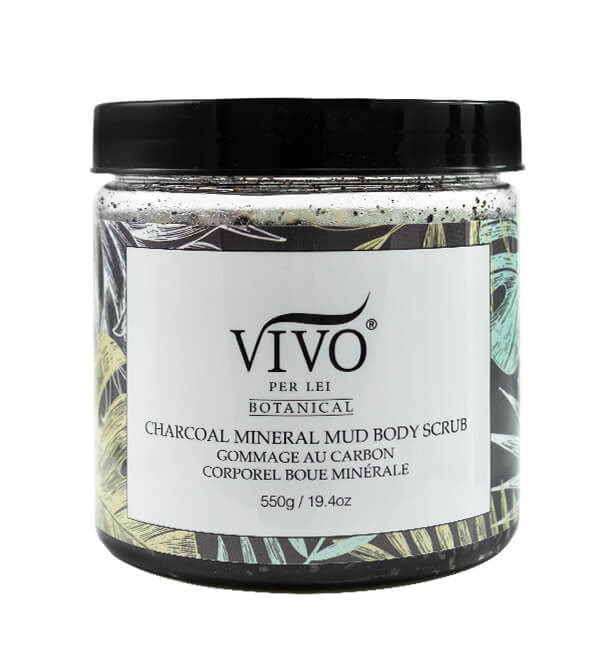
Clay is commonly used in various skincare products, usually in face masks. However, this ingredient makes for a fantastic exfoliator too. Not only does it efficiently soak up excess oil and other impurities, but it also has a mild abrasiveness to it.
With that said, clay on its own may be too gentle for the skin on your body, which is thicker and tougher than the skin on your face. That’s why, in our Charcoal Mineral Mud Body Scrub, we’ve mixed Kaolin clay with sea salt to double up on the product’s exfoliating capabilities. Kaolin isn’t quite as powerful as other clays, making it suitable to use even on dry or sensitive skin. In fact, kaolin works to reduce the look of inflammation in the skin – ideal for anyone who frequently experiences redness or irritation.
3. A Sugar Scrub
Just like salt, sugar is naturally abrasive, making it another popular body scrub ingredient. Some people prefer it to salt because it’s slightly more gentle, although it doesn’t offer the mineral-rich properties that salt boasts.
Of course, there are different types of sugars out there, and they each have a different effect on the skin. White sugar, for example, is the gentlest, whereas brown sugar is grainier and, therefore, a more powerful exfoliator. Raw sugar is even coarser while coconut sugar has the unique advantage of being a humectant. This means that it binds moisture to the skin. This provides instant hydration.
The main downside to using a sugar scrub is that sugar is known for accelerating the skin aging process. Occasionally using a sugar scrub won’t be an issue. However, if you use one regularly and frequently, you could end up damaging the protein fibers that keep your skin smooth and firm, resulting in wrinkles and sagging much earlier on in life.
4. Hydroxy Acids
Hydroxy acids are compounds that are often found in facial exfoliators. They work by dissolving the glue-like bond that keeps dead skin cells attached to the skin’s surface. This then allows those cells to fall away from the skin.
There are several types of hydroxy acids out there. Glycolic acid, which comes from sugar cane, is loved for its potency, whereas lactic acid, which is produced as a byproduct when certain foods are fermented, is gentler and also hydrates the skin. Salicylic acid, which is derived from willow bark, is often sought after by those with oily skin because of how it dives deeper into the pores than other hydroxy acids. It’s great for clearing out blockages and preventing the appearance of acne.
Most hydroxy acid body exfoliators come in the form of body washes. Unlike body scrubs, where you can literally see those dead skin cells being swept away, acid-based exfoliators don’t provide the same sense of instant gratification. However, in the end, they do just as good a job of leaving the skin looking clear, fresh, and revived.
5. Dry Brushing
Dry brushing is an ancient technique that involves rubbing the body with a special brush fitted with coarse bristles. Just like a body scrub, those bristles physically slough off dead skin cells. This is why dry brushing is best done before you step into the shower, as you’ll then be able to wash away all of those dislodged dead cells.
If you want to get dry brushing right, there’s a certain technique to follow. Start at your feet and slowly move up your body, using large, circular strokes that run in a clockwise direction. Not only will this result in better exfoliation, but it will also give your circulation a boost, which will soon have your whole body glowing!
6. A Loofah
Loofahs have been popular for years due to the fact that they’re an easy and inexpensive way to exfoliate. They’re used in the shower, along with a soap or shower gel. Like other physical exfoliants, a loofah scrubs off dead skin cells when it’s rubbed over the body, revealing the smoother-looking skin beneath.
Although effective, many experts advise against the use of a loofah. The main reason for this is down to how all of those nooks and crannies harbor bacteria. Most people clean their loofah by rinsing it in the shower and then hanging it up to dry, but this isn’t enough to get rid of all of that bacteria.
Instead, if you want to use a loofah safely, you’ll need to make sure that you thoroughly clean it after every use. Soaking it in antibacterial soap for 30 minutes is the best way to do so. This ensures that it’ll be as good as new for your next use.
7. A Washcloth
Exfoliating with a washcloth is very similar to exfoliating with a loofah. The cloth is simply rubbed over the body to remove dead skin cells.
However, just like with a loofah, cleanliness is key. Any washcloth that you exfoliate with should be laundered after every use to eradicate all traces of bacteria. Reusing the washcloth without laundering it will only spread all of that old bacteria over your body. This can lead to a number of skin concerns arising.
It’s also important to pay attention to the material that your chosen washcloth is made from. Some can be too hard and rough on the skin, so pick one that’s made from a gentler fabric, such as microfiber or bamboo fiber.
8. Exfoliating Gloves
Using exfoliating gloves is very similar to exfoliating with a loofah or a washcloth, although many would say that the gloves make life much more convenient. These mitts, which are abrasive in nature, are designed to fit over your hands. You then rub your gloved hands over your body to exfoliate it.
Unlike washcloths, exfoliating gloves are designed specifically for exfoliation. This means that you won’t have to worry about these mitts being too harsh on your skin. Most can be used without issues all over the body, including sensitive areas.
9. Honey
If you like the idea of exfoliating with acids but want to try a DIY version rather than purchasing a hydroxy acid body wash, honey could be the way to go. It’s packed with natural enzymes that tackle dead skin cells while also clearing out the pores, leaving the skin feeling refreshed.
Even better, honey offers up so many other skin-loving benefits. It’s a humectant, making it incredibly hydrating, and it’s also great at soothing the feeling of inflammation. It will soften and brighten the look of your skin too while providing a vast array of antioxidants.
What makes honey such a convenient exfoliant is how it can be used on its own. Simply apply a few dollops to your body before you shower, making sure to thoroughly massage it onto your skin. Once you’re done, step into the shower and wash the honey, along with your dead skin cells, away!
10. Oatmeal
Oatmeal is another ingredient that can be used to whip up a DIY exfoliator. It’s naturally abrasive, but not overly so. In fact, its softness and mild nature make it a great ingredient for exfoliating sensitive skin, particularly since oatmeal is also known for how it lowers the feeling of inflammation in the skin.
While oatmeal can be used on its own, try combining it with honey to double up on its exfoliating powers. One tablespoon of each ingredient will give you a gentle but effective scrub that not only thoroughly exfoliates your skin, but also enhances the appearance of your body in so many other ways.
Choosing the Best Way to Exfoliate
Everyone’s skin reacts differently to various exfoliators, making it worth trying out a few different methods before settling on one. It will soon become clear when you’ve found an exfoliator that works well for you – not only will the skin on your body feel smooth and beautifully buffed, but it will also look brighter, softer, and more radiant, which is exactly what a good exfoliator should do!
Click here to explore more bestselling skincare products from Vivo Per Lei.




